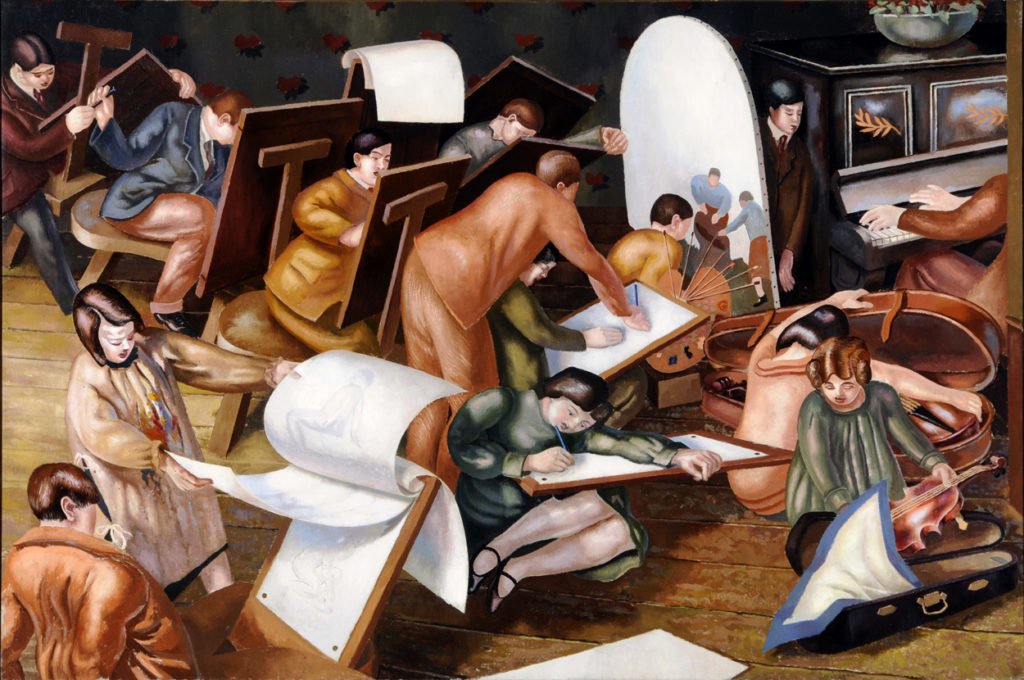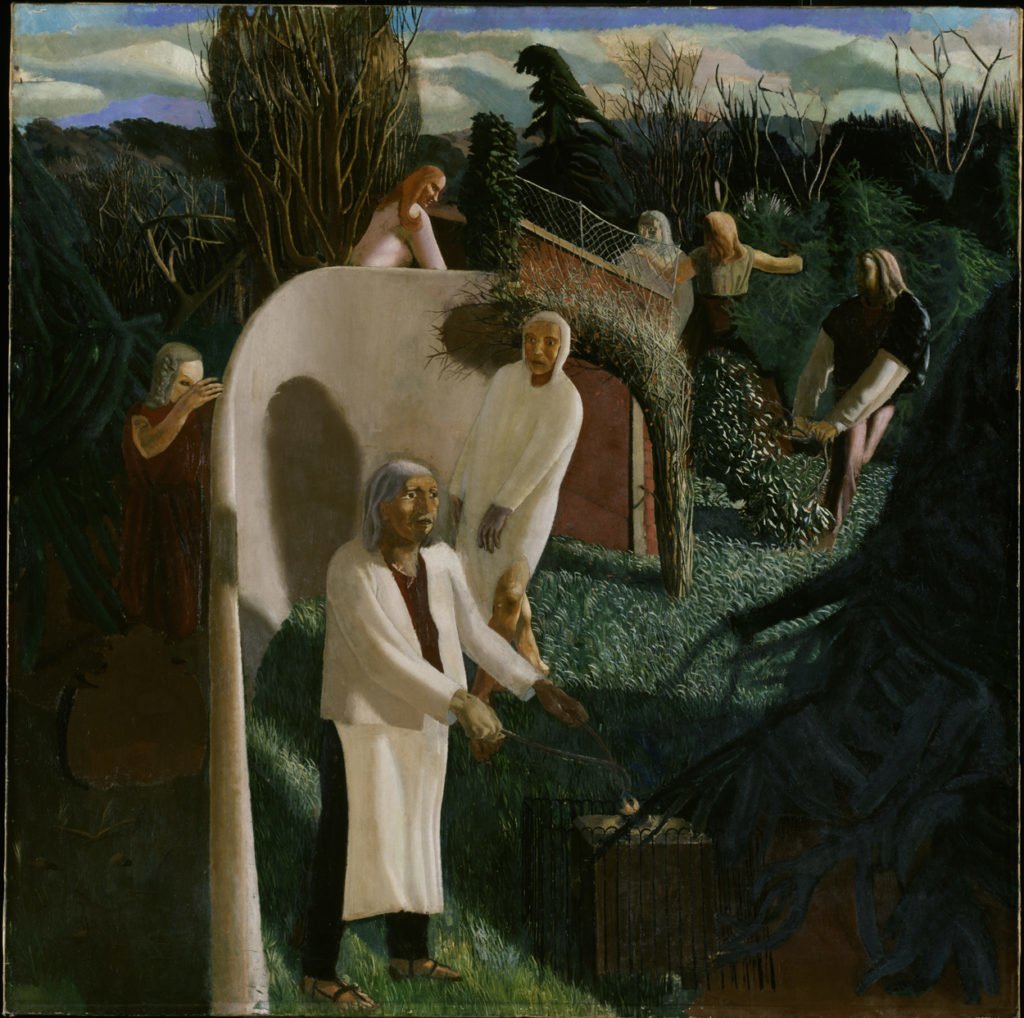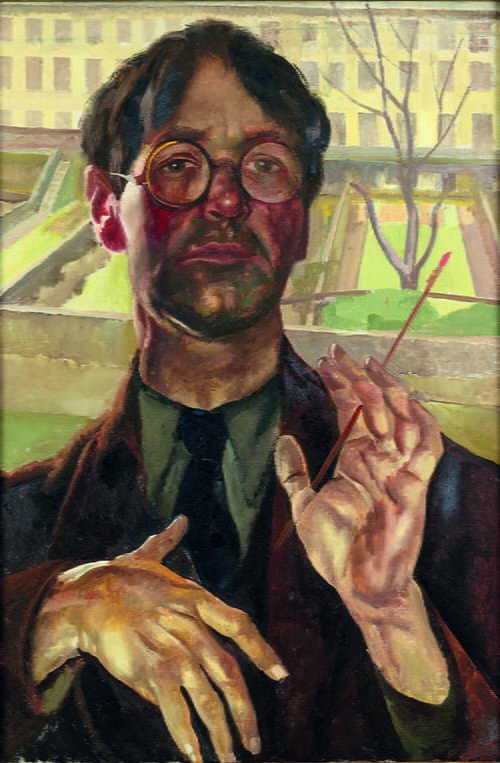Exhibition review: Stanley Spencer’s Of Angels & Dirt @ The Hepworth, Wakefield
August 5, 2016

Stanley Spencer, The Art Class, Left outer panel from the Empire Marketing Board Series, 1929, oil on canvas
After a two-hour examination of this four room exhibition, I was thankful for my tea and scone at the Hepworth Gallery’s excellent café. So many aspects to examine! The first being: who was this artist who expressed his mystifying, distorted, yet so simply executed ideas of contemporary and historic scenes?
I had little trouble understanding his commissioned wall-length murals (‘Ship Building’ and ‘Rope Making’). Their superbly observed and simply executed scenes were easily accessible. The distorted heads were always accurately positioned and could be dismissed as compositional necessities – the hands and feet, in particular, being meticulously painted.
His religious series (‘Stations of the Cross’, ‘Life of Christ’, and other individual religious paintings) presented me with a greater problem. I found it difficult to work out where his interpretations of this traditional theme came from.

Stanley Spencer, Zacharias and Elizabeth, 1913, oil on canvas.
His models were Giotto’s and Botticelli’s groups of angels, and disciples. His observations came from everyday scenes at Cookham, but where did his revolutionary interpretations come from? Like the industrial series, they were beautifully and simply executed. The muted browns and yellow ochre to white/grey were the same.
It was as if he used strange and new compositions to express his unconventional ideas. As a series, they came across very consistently – apart from the differing, individual interpretation of each subject. The individual religious pieces were more enigmatic then the longer series, quite inexplicable but as superbly executed.

Stanley Spencer, Self-portrait, Adelaide Road, 1939, oil on canvas
His landscapes were purely observational. Very accurate, ordinary scenes of houses, fields – whatever caught his eye – but with his unmistakeable individual imprint. Dots, flat areas, stroked trees, and grassy foregrounds – all were used to slowly pull the scene into shape. His portraits used a discreet, almost muted, but appropriate, colour range. Even though he said that these were his ‘bread and butter’ paintings, he obviously enjoyed the experience of portrait painting.
His portraits all seemed to have a meaning, a personal significance – commissioned perhaps, but unmistakably the products of his choices. Patricia Treece, his ‘other’ wife, was a favourite subject. Her rather twister features were portrayed accurately (and consistently). Hilda, his first wife, was shown as a brooding rather pre-Raphaelite figure – long haired, heavy featured – but the treatment of both subjects had a sexy undercurrent. Men friends were portrayed, too, in interesting poses and compositions, and in other colours than the dull ochres of the large murals and religious compositions.
When I left the exhibition, brain dead, for my tea and scone, I still had not worked out the enigma of Stanley Spencer.
Runs at The Hepworth Wakefield until 5 October 2016.
Filed under: Art & Photography
Tagged with: Barry Fox, Of Angels & Dirt, Stanley Spencer, The Hepworth Wakefield


Comments